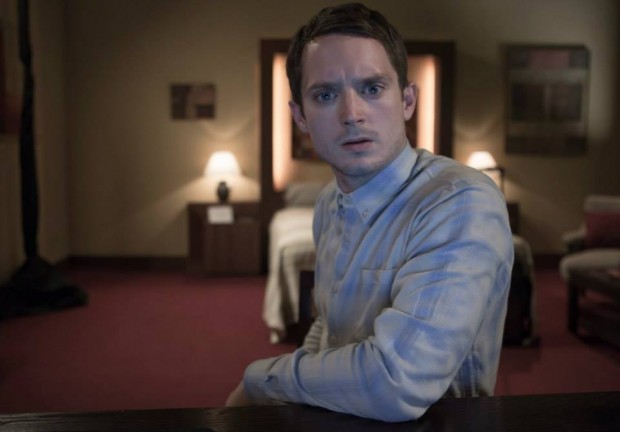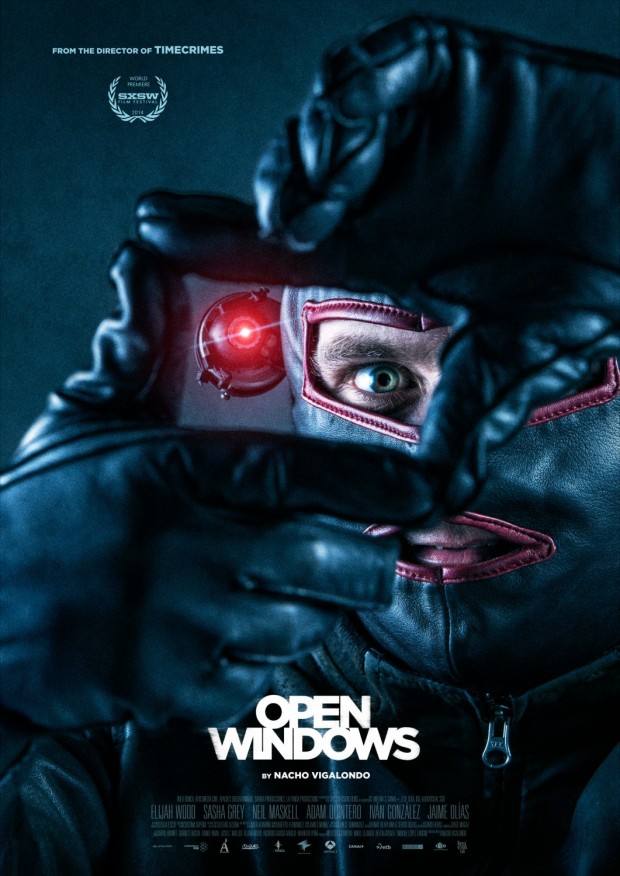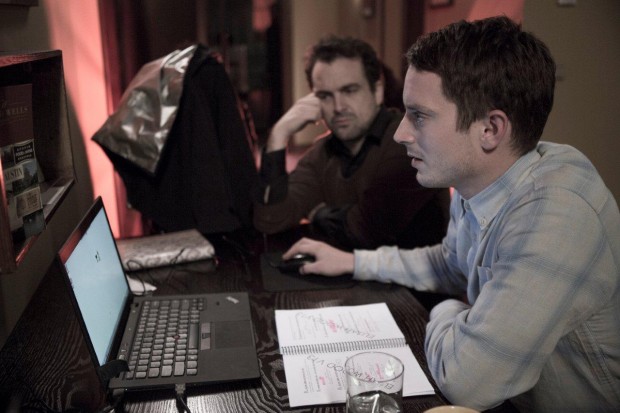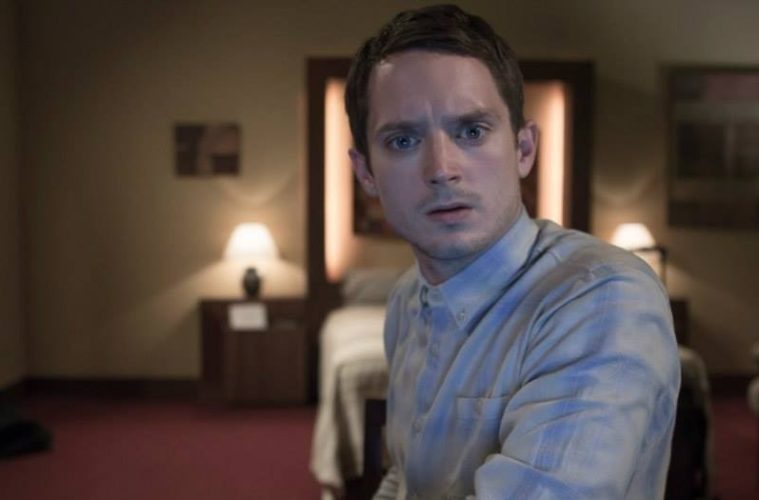
Open Windows, which is now available on VOD ahead of a theatrical release, is the latest thrill ride from writer/director Nacho Vigalondo. He made a splash with the excellent and complex Timecrimes and has continued to make films that push the boundaries of what we expect. His latest film, which is Vigalondo’s first in the English language, stars Elijah Wood as a fan that won a contest to have dinner with movie star Jill Goddard (Sasha Grey) that gets in over his head when someone decides to target him for a bit of fun through technology. What starts as your average thriller quickly grows into something much more complex and difficult to keep contained but is nonetheless engaging.
Earlier this year I had the opportunity to sit down with Vigalondo and Wood to talk about the film and we focused a lot on casting the role of the mysterious caller that ends up tormenting Wood’s character throughout the film and how Wood interacted with him. We also discuss the poster design I saw during the tour and the technology displayed throughout and how much was created for the film and how much actually exists. They also delve into spoilers a bit but I’ve separated those out so you can remain unspoiled if you want to avoid them. I will say that it is interesting the way the film was apparently made and those spoilers specifically talk to that. Below you can find the full conversation.
The Film Stage: For much of this film, audio from the caller — who is credited as “Chord” — is incredibly important. His voice in particular. I imagine casting that was a little bit different for you because most of the time you’re working with chemistry, or does he fit visually?
Nacho Vigalondo: Yeah, it’s a really tough decision but at the same time it’s based mainly on what you use when you make a movie, which is intuition. But when the name of Neil Maskell came, it was like, “Okay, this is the guy.” We know him from his amazing acting in Kill List or Utopia. But his voice is amazing. He doesn’t sound like the average bad guy. He doesn’t have the deep voice you are used to hear when you hear the voice of a villain on the other side of the phone. The thing with the accent is that it gives another layer of presence because you don’t know if this guy is calling from England or wherever. So yes, at the same time it’s a really complicated decision but you do that instantly when they give you the name of Neil.
For you, Elijah, what was it like interacting with someone like that? Were you mic’ed in? Was most of that ADR?
Elijah Wood: Well, I rarely heard Neil. He was around and there was some shooting that overlapped. So I got to meet him and hang out with him, but I didn’t really get a lot of interaction. So largely I was… Our first AD was actually doing a lot of the off lines for me. So it wasn’t really until I saw the film or we started doing ADR that I was able to hear what he sounded like in that character.
Interesting.
Wood: Yeah!
 Can we talk a little bit about the poster [pictured right]? What are you going for here? Is this a special poster?
Can we talk a little bit about the poster [pictured right]? What are you going for here? Is this a special poster?
Vigalondo: This is the poster just for the festival tour. So I don’t think it’s going to be the ultimate poster. I think it’s too scary to be the poster for feature distribution. I’m pretty sure Sasha [Grey] and Elijah are going to be in the final thing. But all I have to say is that I wish this was my idea because I love it. Jorge Alvariño, the photographer, and Villuti Creative Studio was the designer, who made most of my posters. Yeah, the credit is taken by people who are not here, sadly.
[All laugh]
I found the use of technology in the film to be interesting. I’m curious how much of that was created on the fly in service of the story itself and how much of that was existing technology?
Vigalondo: It’s all a big lie. [All laugh]
Vigalondo: The second half of the movie, I was really concerned about boring people with using the same devices again and again. So we came with this idea of a bunch of cameras creating a 3D model. One third of the movie could be called science fiction.
Wood: Yeah, it’s all based on or commentary on real technology or where things could potentially go.
Vigalondo: Yeah, everything is based on things that exist.
Wood: There is actually a camera that exists that is like that camera, which gives you a model, which is amazing.
Vigalondo: For example, the technology that allows you to see through the glass in front of you. It is neat.
You’re saying that’s science fiction? Okay. I hope so.
[All laugh]
Vigalondo: I love to feel freedom when I’m making a movie. I think it’s a freedom we share. It’s okay to follow the rules because restrictions can be cool at some point but at the same time it’s amazing when you don’t restrict yourself. So that’s the reason when I make a movie like this, I don’t close the door to comedy or to fantasy.
***Spoilers***
Wood: It was a really solitary experience, I think, for everybody. For Neil, for Sasha, and for me because we were all in these separate simultaneous experiences that are communicating with each other but each shoot was solitary.
Vigalondo: Yeah, you don’t share space until the very end. Even in the climax, when Neil is with Sasha, they aren’t together because it’s just the camera and the voice. The only sequence where people share space is the last sequence. And even in that sequence, everything gets fragmented. This movie is constantly separating the characters.

Open Windows is now available on VOD and hits theaters on November 7th.

